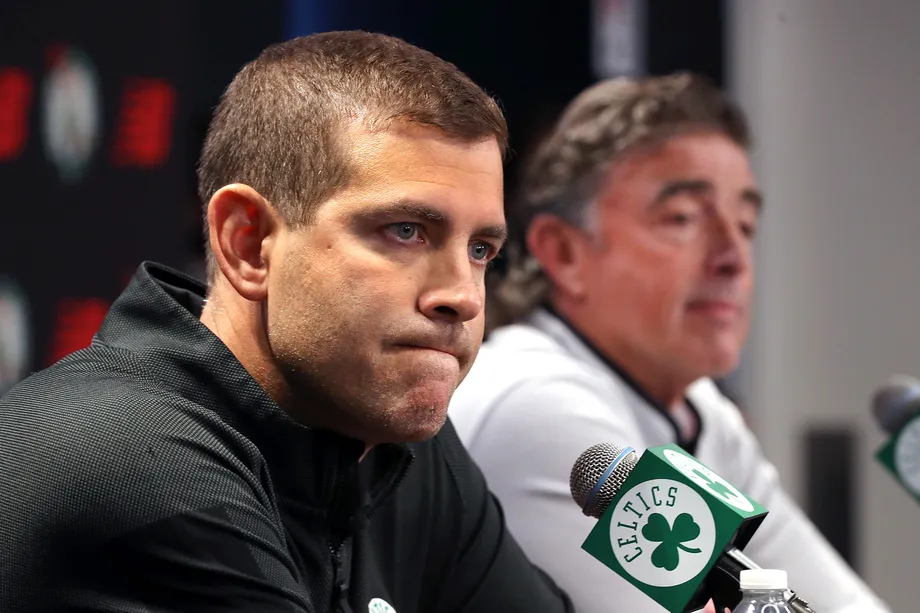A primer on the Boston Celtics trade deadline
A rundown of what the Celtics can do before and after February 8 and the many things they can’t.
The first trade season under the oppressive new 2023 collective bargaining agreement system is upon us. The new CBA has a severe anti-Celtics bias, but that doesn’t imply the Celtics are powerless. As the deadline approaches, we must contend with certain new limitations.
We’ll begin by going over the trade regulations in general (including the new ones), followed by a breakdown of the Celtics’ tradeable assets, and lastly, some possible targets for them.
The increasingly complex NBA trade rules
The NBA’s CBA and the trading regulations have layers, akin to Shrek (or an onion), but let’s start with the fundamentals. The salary cap in the NBA is a soft cap. Put differently, you can review it (I apologise in advance for the excessive amount of times I’m going to use the phrase “in other words” in this piece). The Celtics are, according to Spotrac.com and really everything in this story according to the heroes at Spotrac, about a cool $51.3 million over the cap this season.
Being over the cap restricts the way you can structure deals, but it also important for other reasons that we shall cover later. To put it plainly, groups over the cap have to match the amount of the outgoing salaries (players they are trading) with the incoming salaries (players they are trading for).
It’s not a dollar-for-dollar match, however. Otherwise, it would be basically impossible to trade because you’d be limited to players that have the exact dollar amount of the player you are trading away. Instead, the general rule, and the rule under the previous CBA, is that teams could take back up to 125% of their outgoing salary. Unfortunately, the new CBA has amended this for teams over a certain salary threshold. That threshold is what’s affectionately known as the first apron.
The CBA is set up so that the restrictions get more severe the more money you spend. The cap itself is, of course, the first threshold. After you surpass the $136 million soft cap. Free agents cannot be signed without a special exception. When you reach the $165 million luxury tax barrier, you are required to pay the league for every dollar that exceeds the tax threshold. The first apron ($172 million) is then hit, followed by the second apron ($183 million). There are distinct limits at each aprons. The Celtics are already well past the second apron, with total wages of roughly $187 million, therefore all of the restrictions apply, so we don’t need to worry about which apron each limitation applies to.
The most important apron restriction for trade purposes is that the Cs can’t take back 125% of outgoing salary. Instead, they’re limited to 110% (which falls to 100% after July 1st this offseason and will stay at that level into the future).
Let’s look at a simple example. This is blasphemy, but let’s pretend the Celtics are trading Sam Hauser. He makes $1.9 million dollars this year. With Sam’s money outgoing, the Celtics can receive a player making around $2.1 million in a trade. Easy peasy.
Now that we’ve got the basics, let’s take a look at the Celtics tradeable assets.
Brad Stevens’ war chest
First, here are all of the Celtic’s contracts on the books (from Spotrac):
:no_upscale()/cdn.vox-cdn.com/uploads/chorus_asset/file/25246599/Celtics_salaries.jpg)
You’ll notice that you can actually cobble together a pretty decent amount of money if you combine a few of the end-of-the-bench guys. If you put Jordan Walsh, Svi Mykhailiuk, and Lamar Stevens together, you can total roughly $5.16 million of tradeable salary, which means we can take back a player making roughly $5.676 million. Let’s keep that number in mind for section 3.
Before we move on, we need to address the PPP: the Payton Pritchard Problem. Because Pritchard received a rookie extension this offseason, his contract is referred to as a Poison Pill Contract. That sounds way cooler than it is. Long story short, unlike in the Sam Hauser example, Pritchard’s salary counts differently for the Celtics than the team that is receiving him in a trade. His salary to the Celtics is $4 million outgoing, but for the team receiving him, it is $6.8 million incoming (the average of his current salary and all the extension years). It is very tricky to trade Pritchard, but not impossible. It’s made considerably easier to a team with cap space because they can just absorb the extra money and send back the Celtics a player making up to $4.4 million. If you’re lost, that’s ok. The main takeaway is that Pritchard is far less likely to move because of this than some of the other bench players.
Now, onto the draft picks. Or as I like to call it “Brad Stevens’ not-so-secret obsession with second round picks.” The picture is from Fanspo.com
:no_upscale()/cdn.vox-cdn.com/uploads/chorus_asset/file/25246614/Fanspo_picks.png)
This list is actually missing the 2028 1st rounder, which we owe to San Antonio in a swap. But because it’s a swap, we still do own a pick in 2028; it’s just the worst of our 1st or San Antonio’s. But wait, there’s more. The NBA’s Stepien Rule requires that a team have at least one 1st round pick in every other draft. Looking at the Cs’ situation, because we traded our 2029 pick to Portland in the Jrue Holiday trade, the 2028 swap and the 2030 1st are off the table. We also can’t trade two consecutive picks, so we couldn’t package the 2024 and 2025 1sts in a deal. With all that in mind, the Celtics are left with the following tradeable draft assets:
1sts – 2
2nds – 8 (Brad!!!)
Our final “asset” is courtesy of good old friend Grant Williams. That is the $6.2 million Traded Player Exception. Without going into the minutiae of TPEs, its basic function is that it acts as a tradeable salary without requiring you to actually trade a player. In other words, the Celtics can receive any player in the NBA making $6.2 million or less without sending out a player in that trade.
They are incredibly helpful, but like with everything in the CBA, there is a significant constraint. The TPE cannot be merged with other contracts to recoup additional compensation, in contrast to player salaries. Let’s take Sam’s $1.9 million, for example. We were unable to reclaim a player earning, let’s say, $8.0 million by stacking his money with the TPE. We can still offer contracts to players that do fit the TPE, though, in order to reduce the salary we are taking on. Therefore, in order to save some money (and a lot of luxury tax), we may utilise the TPE on someone who makes $5.9 million and send Svi with it. #
One other thing to consider: Boston has an open roster spot. That could be used to promote a current two-way player, say Neemias Queta for example. Or, Stevens could decide to make an uneven 3-for-2 or 2-for-1 without having to cut a player.
Let’s sum up what the Celtics have in their arsenal for the deadline (there’s no way they are touching the top-6, so they aren’t included here):
Players
:no_upscale()/cdn.vox-cdn.com/uploads/chorus_asset/file/25246697/Players.jpg)
Draft Picks
1sts – 2
2nds – 8
TPE – $6.2 million
Alright, on to the fun stuff.
A few types of players the Celtics could target
Even while it’s entertaining to add up five or six wages and go shopping for some players who earn a respectable living, that is incredibly challenging to do in practice. To complete the deal, the team receiving them must either have available roster places or be prepared to cut players. Owing to that challenge, I believe there is a far greater likelihood that the Cs are looking for contracts that fall within the TPE. The Celtics are essentially restricted to players making $6.2 million or less, though they will almost definitely send away some men with the TPE.
Players like Pritchard who are poisoned must also be considered. That eliminates two of my personal favourites.
Bigs
- Nick Richards – Charlotte – $5.0 million
- Mike Muscala – Detroit – $3.5 million
- Xavier Tillman – Memphis – $1.9 million
- Andre Drummond – Chicago – $3.3 million
Wings
- John Konchar – Memphis – $2.4 million
- Julian Champagnie – San Antonio – $3.0 million
- Reggie Bullock – Houston – $2.0 million
- Saddiq Bey – Atlanta – $4.5 million
Guards
- Simone Fontecchio – Utah – $3.0 million
- Dennis Smith, Jr. – Brooklyn – $2.0 million
- Jevon Carter – Chicago – $6.1 million
Not precisely an All-Star team, but the Celtics just don’t have a wide pool of players to choose from given their top-heavy wage structure and the CBA restrictions they must deal with.
That being said, the Celtics have enough picks to tempt one of these teams to trade them, and there are a few extremely intriguing players—Fontecchio, Tillman, and Bey, in particular—who might very well find their way into the starting lineup. The Celtics might just smack a seeing-eye single up the middle during trade season, but I don’t think they’ll hit a home run.





